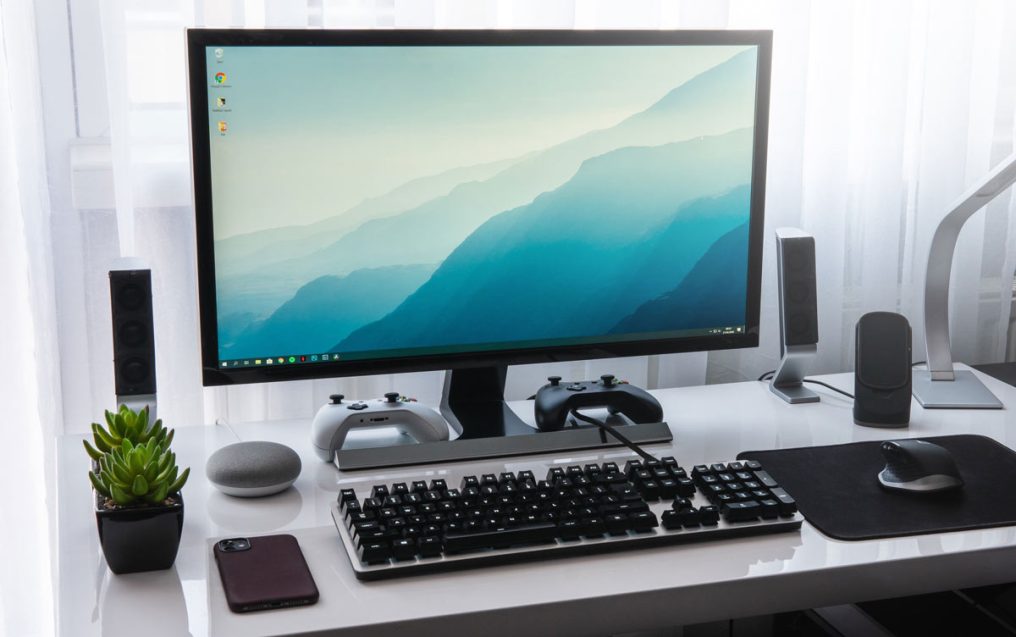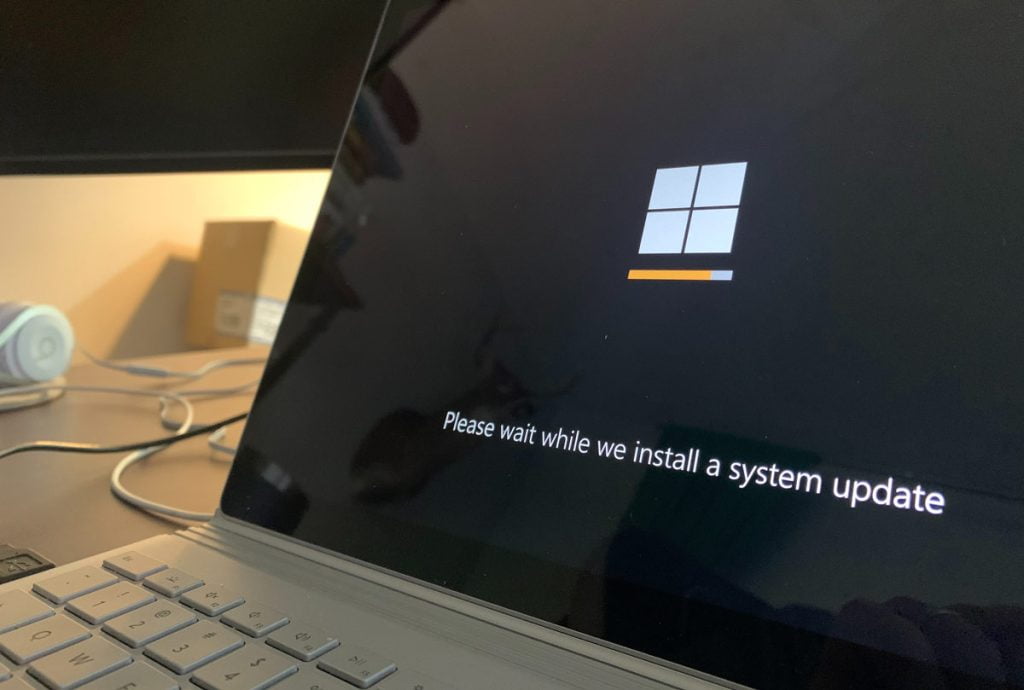Call Us
My Windows PC Is Running Slow, What Steps Can I Take to Fix it?

Is It Normal for a Windows PC to Slow Down Over Time?
A Windows PC will always slow down over time. And when this happens, you may wonder why your computer was running fine a month ago, but not so well today and what could you possibly do yourself, in order to bring it back to life.
The answer is simple, yet solving the problem may prove to be a bit more challenging. But the article below may help you on this quest.
Reasons for a Windows Computer Slowing Down?
There are many reasons why computers slow down, however, most can be placed in one of the following three main categories.
- unbalanced demand vs offering of resources
- misconfigured drivers and software
- faulty hardware
The cause for the slowness of your system could be one of the above or a combination of any of those. We will dive into these issues below and then offer simple solutions to most.
Auto-starting Programs
One of the most common reasons why a PC slows down over time is that we install more programs. A lot of those programs will start running as soon as you log into Windows, many times without your knowledge, taking up vital resources that could otherwise be re-directed towards more important core functions of the operating systems, or third-party programs that you may need to be more responsive. It is important to identify these programs and disable them from startup.
Unnecessary Software
Even software that is installed and will not necessarily start itself up at login, can slow down your PC. Windows needs to keep track of these programs in numerous ways. Configuration is being added to your registries, regular updates to these programs could be scheduled by vendors taking up resources as well, and surely they take some space on your internal storage disk. If you have software that you do not use anymore, remove it.
Windows Registry
Windows registry is mainly an extremely large database containing property values for all operating system configurations as well as third-party software ones. This database grows larger in size with every change that happens on your system.
A lot of those changes can be user-triggered through software installation or configuration, or automatically by software updates, be it third-party ones or windows updates. Just like any other database, the larger it grows in size, the more resources are needed to administer it.
System Updates

As mentioned above, system updates also known as Windows updates will alter the registries causing potential slowness on your system. Another reason why Windows updates could slow your system down is due to the fact that they may start new services on your system or even add new ones that never existed before.
Most of the time, these actions are being taken as a proactive measure against newly discovered malicious attacks, to fix bugs and improve system stability, or to support new peripherals. Nothing you can really do here other than upgrade your system to accommodate these growing needs.
Malware & Viruses
Most malware nowadays is designed around the concept of creating a system problem to which they claim to have a solution. And what better problem to create, other than slowing down your computer by eating up on resources?
These malicious programs will create conflicts or start programs at will in the background, leaving barely any resources available for the core operations. Then they will try to lure you into paying a high price for them to solve all this mess through only a few simple clicks.
Remember those scare-mongering pop-ups advising you to call ‘Microsoft’ as soon as possible? Well don’t, since all they will do is worsen the situation and eventually steal some valuable data on top of it.
Instead, try to run a virus scan with your trusted antivirus installed on your system. By default, it is Windows Security, unless a third-party one like Avast or McAfee had been installed. Ensure the latest updates for both the program itself and the virus definitions have been applied prior to the scan.
Cluttered Hard Drive
A cluttered hard drive isn’t really a cause for slowness anymore nowadays. We only mentioned it since there is still a lot of misconception out there, causing a lot of users to think that they need to ‘defragment’ their drive. This was true up until Windows 7, when defragmentation was set to happen regularly and automatically, without user intervention.
When it comes to storage disks, be it a hard drive or a solid-state drive, the only notable cause of slowness is the lack of space. So if you only have 10 GB of free space on a 500 GB drive, you will need to free up some space by either moving data or uninstalling unnecessary programs.
Tools like CCleaner could also help you free up space by removing unnecessary cached data. As a rule of thumb, you should leave between 15% – 20% of available disk space for your system to properly operate.
Not Enough Ram

This is the second biggest misconception we often see out there, even among some technicians. While a lack of RAM could absolutely slow down your system, the circumstances of that being the case are rarer than you would think.
It is easy to check if RAM is the culprit, by launching Task Manager (Ctrl+Shift+Esc) and looking at the ‘Memory’ tab. If this peaks at 100% or close to it at all times, then that is the issue indeed.
You can free up RAM by stopping unnecessary programs from starting up with Windows, or by adding more RAM to your system, though some newer laptops aren’t upgradable if the RAM is soldered onto the main board.
Outdated Drivers
You can look at a driver as a language translator between hardware components and your operating system. A driver essentially tells Windows how to communicate with specific hardware, like your keyboard, hard drive or video card. Keeping these up to date is important. Take for instance your storage driver. If this is corrupt or outdated, then Windows won’t know how to take advantage of all the capabilities and speeds of your disk.
A conflicting driver can also cause Windows to take a very long time to load or sometimes not at all. Luckily, starting with Windows 10, most of these drivers get updated automatically, but it is still a good idea to take a peek into ‘Device Manager’ and look for any yellow alerting signs or question marks. These indicate driver issues on your system and need attention.
Hardware Failures
The most common hardware issues that cause slowness on a system are a hard drive failure or an overheating one. Both are easy to spot with free tools like ‘Crystal Disk Info’ or ‘HWMonitor’. You can install these tools to monitor your hardware.
Interpreting Crystal disk Info is very straightforward. The ‘Health Status’ value can range from ‘Good’ to ‘Failing’ and anything other than ‘Good’ will need replacing of the drive ASAP.
HWMonitor may be trickier to interpret and may need a bit more digging to determine if the temperature values are within normal range or not, taking into consideration your system configuration as well as load. Some very rough acceptable numbers for CPU and GPU would be between 40 and 70 Celsius when the system is idling.

How to Speed up a Slow Windows Computer
Now that we have an overall idea of what could possibly cause our system to slow down, let’s look at a few simple ways you can try yourself at home to make your system more responsive. I would strongly suggest you use Task Manager as your friend in troubleshooting and fixing the slowness.
As we stated at the beginning of this article, most issues fall into one of three categories, and one of them is an unbalanced demand vs offering of resources. Task Manager will show you when these resources become more readily available for the tasks that matter to you.
Disable Background & Startup Programs
Upon launching Task Manager (Ctrl+Shift+Esc) you will be presented with the resources allocation screen. Look at the CPU, Memory and Disk tabs. These are your computer resources that are needed by different programs and services. We will try to lower these numbers, by going to the ‘Startup’ tab and stopping all unnecessary programs from running in the background.
Keep in mind that all these programs can still be started manually if needed, after disabling them from startup. So go ahead and right-click on any of the ones that you do not want to launch themselves automatically when logging into Windows, and select ‘Disable’.
Typically, the only ones that should be left enabled are programs that sync your data to a cloud service, like Microsoft OneDrive, Dropbox or Google Drive. And only if you are actually using these services. Once done, restart your computer and see if you notice any difference.
Remove Unnecessary Programs
Even programs that aren’t running at all times in the background can take up resources randomly, either when they are scheduled to look for updates online or by simply having services associated with them running in the background.
Head over to ‘Control Panel’ and look for ‘Uninstall a program’. The option is located either under ‘Programs’ or ‘Programs and Features’, depending on your ‘View’ filter. The easiest ways to access ‘Control Panel’ are either by typing ‘control’ in your search box or magnifier and hitting enter, or by pressing ‘win key’ + ‘R’ and typing ‘control panel’ and click ‘OK’.
Now go through the list of programs, and get rid of the ones not needed by double-clicking each of them and following the instructions to uninstall. It usually just means clicking ‘yes’ and ‘ok’ a couple of times.
Scan for Malware & Viruses
If you experience random, suspicious pup-ups then most likely your system is infected. Do not click those links in an attempt to download their ‘magic’ software. Instead, use your own antivirus, or even better download a reputable free one like Malwarebytes, since your own failed to block these malicious programs in the first place, and do a thorough scan of your system.
Malwarebytes will ask you to ‘Quarantine’ all infected items and restart the system after. If you still see pop-ups or your web searches are being redirected to suspicious websites, you may have to restore your browsers to their factory defaults.
For Google Chrome, you need to click on the three vertical dots located in the upper right corner, click ‘Settings’ and then ‘Reset and cleanup’. Select the ‘Restore settings to their original defaults’, then ‘Reset settings’ once again and you’re done. Your bookmarks, saved passwords and forms will not be affected by this.

The process is similar for Microsoft Edge. click on the horizontal three dots in the upper right corner, head over to ‘Settings’, click ‘Reset settings’ then ‘Restore settings to their default values’ and finally confirm your actions by hitting ‘Reset’. Again, this will not affect any of your saved favourites, passwords and forms. The same should be done for any other browser in use, like Firefox or Opera.
Clean Up Your Hard Drive
As we mentioned above, disk space is the one single factor we need to take into consideration when it comes to slowness stemming from a hard drive. Organizing data in folders and manually attempting to defragment will not make a difference in how well your system performs.
Make sure you have a minimum of 15% available disk space by opening ‘File Explorer’ and clicking on ‘this PC’. This should bring up all disks connected to your system into the right pane. Look for ‘Windows (C:)’ drive. It should show how much disk space is available, out of the total storage capacity. If it’s filling up quickly, you may need to look into moving some of the data to an external drive, or to the cloud using Microsoft OneDrive or some other provider of your choice.
Remember that these cloud services are a two-way sync unless properly configured. That means your data will not be ‘moved’ to the cloud, but rather synced on both the cloud as well as your system. To actually free up space, they need proper configuration. You can read more about how to properly configure Microsoft OneDrive here.
Upgrade Your RAM
In rare cases, RAM can cause slowness. To test this theory, you should first restart your system, then open ‘Task Manager’ (hit Ctrl+R and type ‘taskmgr’ then hit ‘OK’ and look at the ‘Memory’ tab. If this peaks at 100% at all times and you already went through the disabling background and startup programs process described above, then you’re due for some system upgrades.
On most desktop systems this is a simple process, while on laptops you may need a professional to take it apart and add more RAM. In both cases, you need to ensure that you purchase RAM of the same type and speed as your existing one to avoid physical or logical incompatibilities.
There is no simple way of finding this information, unless you feel like typing commands into the command prompt and know how to interpret the output. An alternative way would be to google your device make and model, and try to find out the type of RAM from online device specifications.
Check for and Install System Updates
Being up-to-date is important. Luckily, most of your system software updates itself regularly, however, sometimes updates fail to install properly or do not install at all. We are mainly referring here to Windows updates and driver updates. Which on most systems, are configured to do so automatically.
It is a bit difficult to provide a techy explanation as to why this causes slowness, but I will provide an analogy to make sense of it. Your hardware components, drivers and Windows are a team of workers, like in a fast food shop. Your demands on your system can change. In the case of our restaurant, the demands are represented by the ever-changing food menu. Your staff needs to be trained on how to quickly prepare those new items. If you train or update all your staff members except for one, then everyone else will have to wait on that one untrained staff member to do his or her job properly. That one untrained staff member is your failed driver or system update and will slow down the entire team which represents the whole system.
To check for updates, click on the start menu, ‘Settings’ and ‘Windows Update’. On this main page, you can click on ‘Check for updates’ to force a manual update of Windows. You can also click on ‘Advanced Options’ – ‘Optional Updates’ and select ‘Driver updates’. Select all available driver updates from the list and click on ‘Download & install’. A few restarts may be required to complete.

Install an SSD
If you checked your hardware and your hard drive is failing, we recommend installing a solid-state drive as opposed to a conventional hard drive. Most times, even if your current hard drive isn’t failing, a solid-state drive will still make a huge performance impact on your system.
A slow drive will cause the whole system to halt, sometimes causing confusion even for some more experienced technicians. They will notice a CPU spike and recommend a CPU upgrade when in reality programs are having a hard time writing to the disk due to its slowness.
Overheating should be inspected in this scenario as well since a CPU spike could also be caused by poor airflow or old thermal paste not properly dissipating heat.
We recommend you contact a professional to properly determine the best cause and plan of action when it comes to hardware failures. This can avoid data loss or investing money into the wrong components.
Reinstall Windows
Reinstalling Windows can be a safe and easy avenue to take into speeding up your system. It will get rid of any driver corruption, software update issues, registry clutter or malware infection.
Before proceeding, make sure you backup your important data and confirm you have no hardware issues. By that I mean test your drive health and system temperatures as described above.
I also recommend a manual data backup, since tools like Windows backup and other third-party ones can eventually backup and restore infections or bugs that you’re trying to get rid of to begin with.
If your system supports it, try to do a factory reset, which is similar to a Windows reinstallation. To do so, click on the start menu, go to ‘Settings’ and type ‘reset’ in the search box below your profile. It should bring up the option to ‘Reset this PC’. Click on it and follow the instructions. You have the ability to keep your personal data or remove it.
More on how to perform a system reset on different flavours of Windows here, under ‘How to Factory Reset Microsoft Windows’
Key Takeaways
As you can see, there may be numerous factors leading to slowness on a PC, however, with a logical approach to it, you can eventually identify those and act accordingly.
The most important aspect when troubleshooting is to understand the concept of resources, who is actually using them and how you can re-direct them toward more critical tasks. While most of these actions listed above can be safely applied by most users, some may need professional help.
At EezIT, we have extensive knowledge and plenty of experience to be able to determine a solid plan of action in resolving these issues, usually within the first 15 minutes of our visit. Contact us for more information or to book an appointment with one of our experienced Calgary IT technicians.

